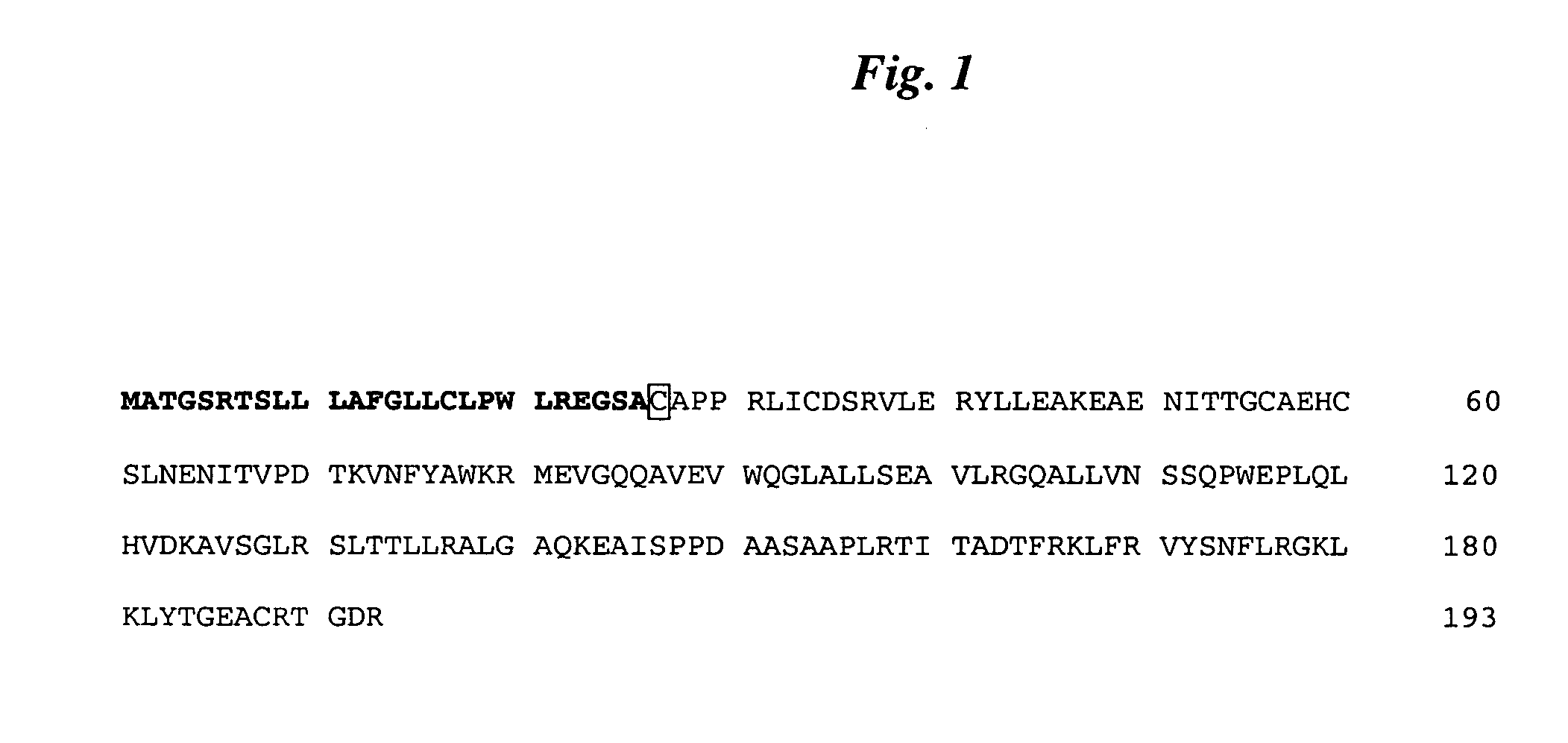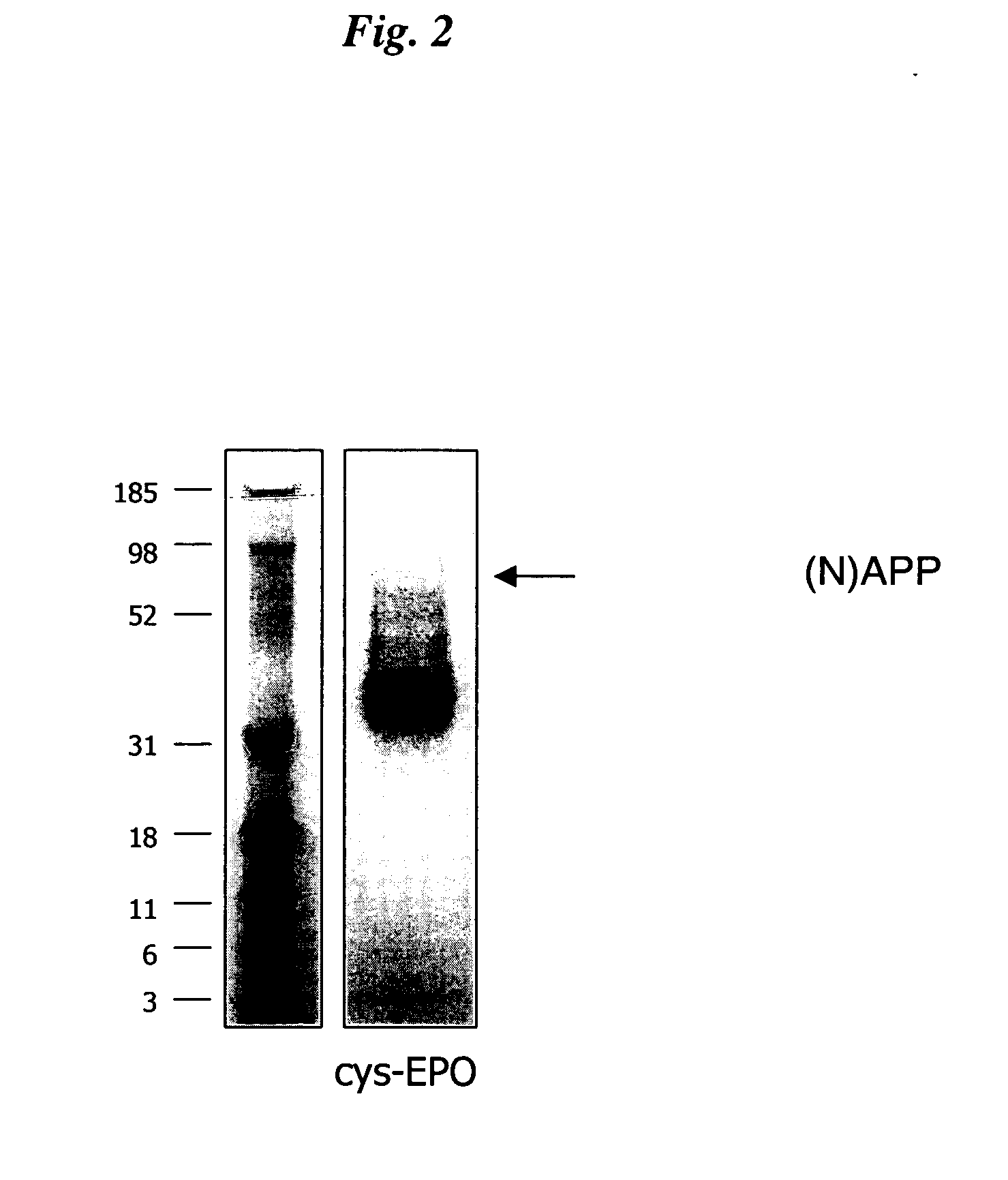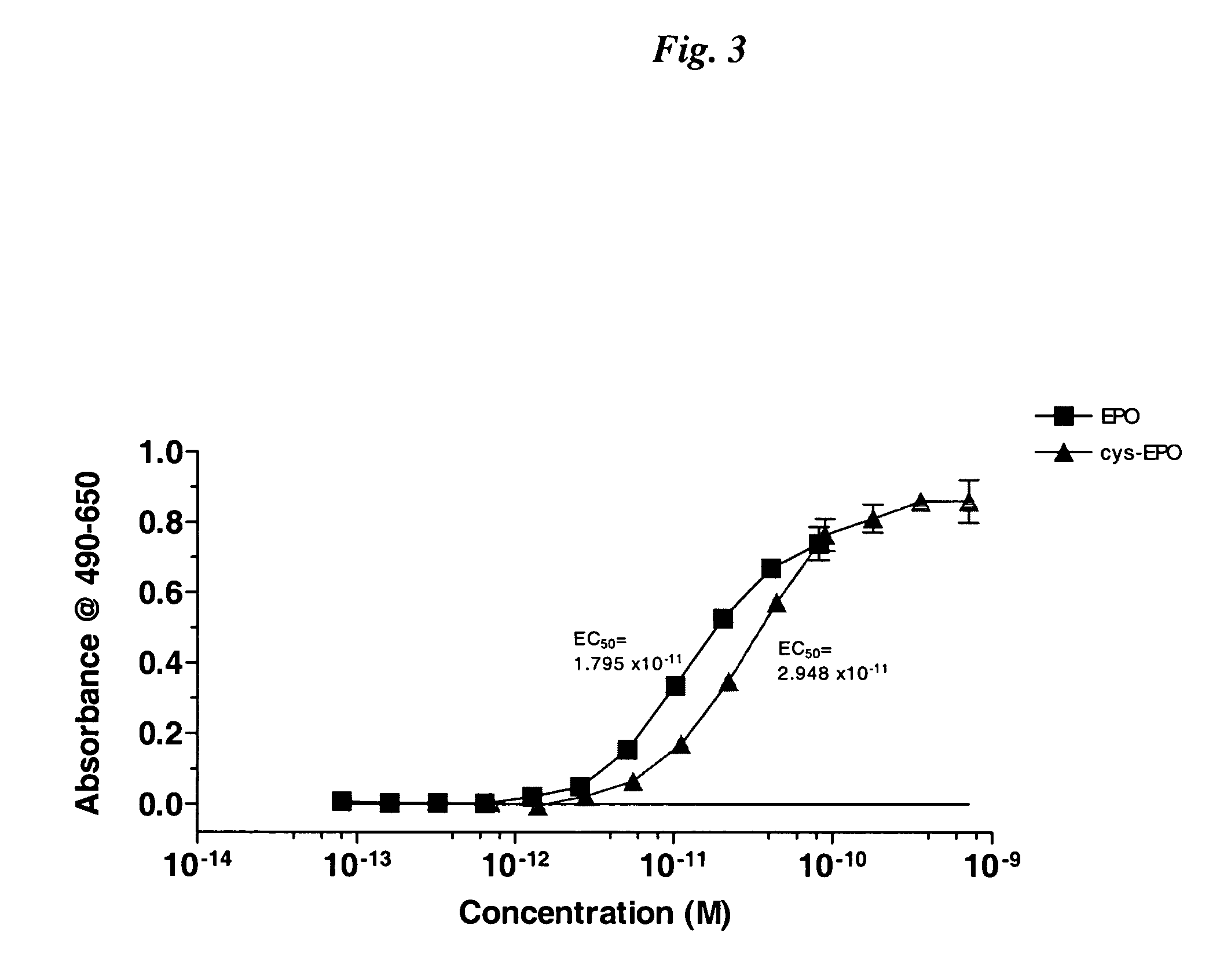Novel recombinant proteins with N-terminal free thiol
a thiol and recombinant technology, applied in the field of recombinant proteins with n-terminal free thiol, can solve the problems of short plasma half-lives, poor patient compliance, less than optimal outcome, etc., and achieve the effect of increasing the half-life of epo
- Summary
- Abstract
- Description
- Claims
- Application Information
AI Technical Summary
Benefits of technology
Problems solved by technology
Method used
Image
Examples
example 1
Cloning Cys-EPO
[0093] The N-terminus of EPO is not involved in receptor binding and is positioned such that it points away from the EPO-receptor complex. Because of this, the N-terminus of EPO offers an ideal position for incorporating chemical modifications that should have the least steric effect on receptor binding and therefore also on bioactivity. Introduction of a cysteine residue at the N-terminus would therefore allow for site-specific modification of EPO without disrupting receptor binding.
[0094] The creation of a HEPO sequence that has a cysteine residue N-terminal of the alanine residue by manipulating the EPO genetic sequence or cDNA was therefore undertaken. However, in silico analysis, suggests that merely adding a cysteine codon into the EPO precursor coding sequence could shift the putative cleavage site upstream between proline24 and valine25 in the signal peptide to leave val25 as the neo-N-terminal residue or cause the cleavage between the cys(−1) and ala1 to ef...
example 2
Expression of Cys-EPO
[0103] The novel EPO protein was expressed using transient transfection where DNA is taken-up by mammalian cells, exported to the nucleus and transcribed. Using this technique a pulse of protein expression achieved in a rapid fashion. The product, cys-EPO was collected from the conditioned medium five days after transfection and purified using the hexaHis tag positioned at the C-terminus of the protein.
[0104] DNA encoding cys-EPO (pSUEcysEPO) was transfected into HEK 293E cells using a cationic lipid reagent (LF2K). Cells were then cultured in a serum-free medium (293-SFMII) in a 10-tier cell factory and after 4 days conditioned medium was recovered and cys-EPO was purified using TALON IMAC. Following dialysis and concentration, the purified product was analyzed by SDS PAGE for purity (FIG. 2), N-terminal sequencing and UT-7 bioassay (FIG. 3).
[0105] In the bioassay, UT-7 cells starved in IMDM with L-glu and 5% FBS without Epo for 24.5 hrs prior to assay. Cell...
example 3
Chemical Modifications of Cys-EPO
Experiment 1
[0110] Buffer exchange was performed on Cys-EPO against phosphate buffered saline at pH 7.0 (PBS) with 1 mM ethylenediaminetetraacetic acid (EDTA). Cys-EPO (0.7 mg / ml in PBS+100 mM phosphate, pH 6.8) and EPO (0.7 mg / ml in PBS+100 mM phosphate, pH 6.8) were incubated at 37° C. for 2 hours with 0 mM, 15 mM, 20 mM, and 25 mM b-mercaptoethylamine (MEA) (Pierce Biotechnology, Inc., Rockford, Ill.). The MEA was then removed from the samples with Biospin-6 desalting columns (Biorad Laboratories, Hercules, Calif.) equilibrated with phosphate buffer (50 mM, pH 6.8) as per manufacturers instructions. The samples were then incubated with 0.75 mM maleimide-PEG (average molecular weight: 5960) (Nektar, Huntsville, Ala.) for 1 hour at ambient temperature. After an hour, cysteine was added to a concentration of 0.75 mM and incubated at ambient temperature for 20 minutes. Samples were then loaded and run on a 4-12% SDS-PAGE gel. Samples were also anal...
PUM
| Property | Measurement | Unit |
|---|---|---|
| Mass | aaaaa | aaaaa |
| Mass | aaaaa | aaaaa |
| Time | aaaaa | aaaaa |
Abstract
Description
Claims
Application Information
 Login to View More
Login to View More - R&D
- Intellectual Property
- Life Sciences
- Materials
- Tech Scout
- Unparalleled Data Quality
- Higher Quality Content
- 60% Fewer Hallucinations
Browse by: Latest US Patents, China's latest patents, Technical Efficacy Thesaurus, Application Domain, Technology Topic, Popular Technical Reports.
© 2025 PatSnap. All rights reserved.Legal|Privacy policy|Modern Slavery Act Transparency Statement|Sitemap|About US| Contact US: help@patsnap.com



